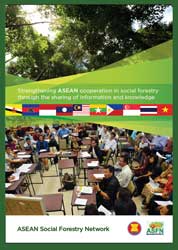NEW STATE-OF-THE-ART FOREST NURSERY SOON TO RISE IN UPLB
A state-of-the-art forest nursery with the capacity to produce up to 30 million tree seedlings a year, will soon rise in the province of Laguna, which is home to the country’s premier institution of higher learning in forestry and environmental management.
This was after the Department of Environment and Natural Resources (DENR) recently signed an agreement with the University of the Philippines-Los Baños (UPLB) in Laguna to construct a P27.5-million Modern Mechanized Forest Nursery. The project is set to be completed within the year.
The agreement was in line with the implementation of a five-year project called “Integrated Research and Development Grant for High Value Forest Crops” that aims to produce high quality seeds to be used in the government’s National Greening Program (NGP).
NGP is the flagship reforestation program of the Aquino administration that aims to cover 1.5 million hectares of denuded forestland by the end of 2016.
However, the program was extended until 2028 by virtue of an executive order issued by President Benigno Aquino III to cover the remaining 7.1 million hectares of unproductive, denuded and degraded forestlands nationwide, which can contribute to environment-related risks such as soil erosion, landslides and flooding.
UP President Alfredo Pascual and DENR Undersecretary Jonas Leones led the groundbreaking rites last week for the construction of the forest nursery, pursuant to a memorandum of agreement (MOA) earlier signed by Pascual and DENR Secretary Ramon J.P. Paje.
According to Paje, the MOA was in keeping with the DENR’s push to tap biotechnology in the production of quality planting materials as a strategy to boost the NGP’s performance.
“We once more demonstrate our strong partnership through this endeavor,” Paje said, adding that the initiative was “another testament to invaluable role the UP system has played in the DENR’s efforts to raise the performance standards for its workers.”
In January, the DENR and UP launched the UP Program for Environmental Governance (UPPEG), a five-week intensive training meant to enhance the capacity of provincial and community environment and natural resources officers on environmental governance. The program consisted of six learning modules and involved 22 ranking UP professors as lecturers.
Under the latest DENR-UP collaboration, the DENR will fund the construction and operation of the mechanized nursery, situated on a three-hectare area within UP-Los Baños.
At the heart of the facility is the “seeder building,” which would process the sowing of seeds into the styro-blocks propagation container with customized seed pads, and treated through a misting area for watering before they are placed into the greenhouse.
There are also “growing areas” to be built in the area, consisting of greenhouses equipped with misting devices and other facilities that helps in the germination process of the germinants, commonly known as “sprouts.”
The “hardening area” is where gradual exposure of the seedlings into full sunlight is conducted to ensure the sturdiness and high-quality planting materials before they are planted into selected planting sites.
Once fully operational, the mechanized nursery is expected to produce and accommodate up to 30 million seedlings a year, depending on the variety of seedlings grown. ###
- Details
- Parent Category: News & Events
- Category: Press Releases




